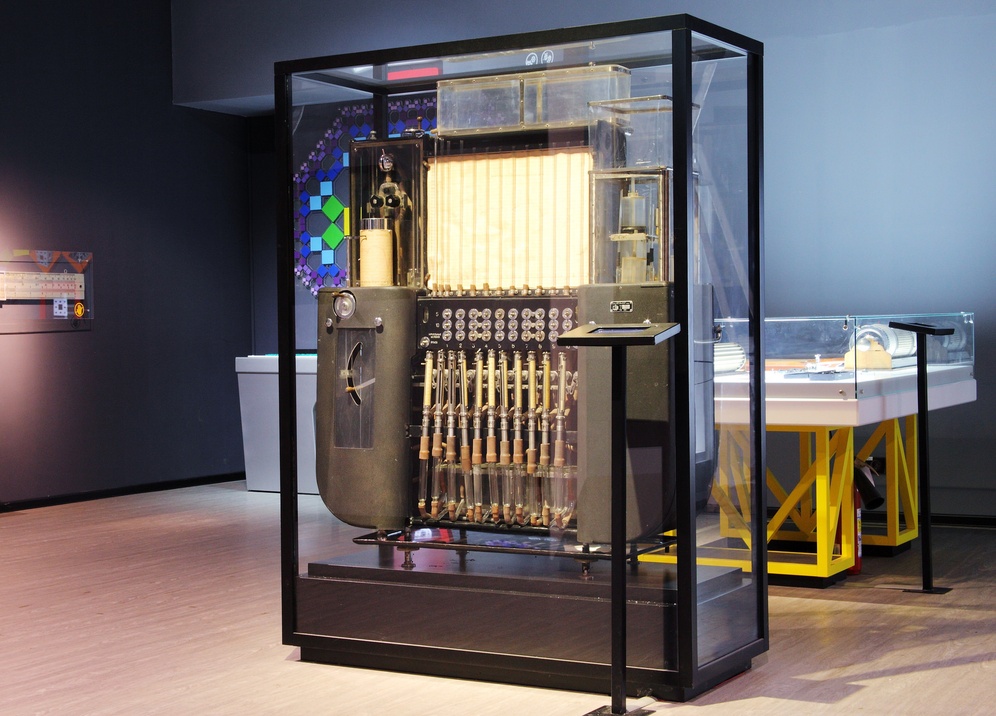[ad_1]

While the first computers were mechanical and famously ran on vacuum tubes, there were other schools of thought that brought us a different kind of computer that ran on water. Built by Vladimir Lukyanov in 1936, the “Water Integrator” solved partial differential equations using a series of tanks, tubes and pumps to manipulate the flow of water. Lukyanov discovered that water flow is in many respects similar in its laws to the distribution of heat, thus by building a computer where the main component was water, he could visualize the invisible thermal process.
Solutions were found by giving a measurement of water in certain tubes (with precision to fractions of a millimeter). The device was originally created to solve problems with cracking concrete, but it went on to inspire systems using the same technology across fields including geology, metallurgy, thermal physics and rocket engineering.
A water integrator was used in the design of the Karakum Canal in the 1940s, and the construction of the Baikal–Amur Mainline in the 1970s. Water analog computers were used in the Soviet Union until the 1980s for large-scale modelling.
Today the Water Integrator can be viewed at Moscow’s Polytechnic Museum.
Image credit: Kramola
Choose your answer. The correct choice and a brief explanation will show below. Content is intentionally upside down, so there’s no peeking before you answer.
[ad_2]
Source link
